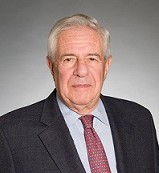More than 250,000 middle market businesses are in trouble. Their survival may depend upon how quickly and how vigorously a course which will generate financial and human capital is pursued. But, usually, by the time this warning is sounded, performance has deteriorated sufficiently to jeopardize lending relationships, customer contracts, credit ratings and employee confidence. An antacid may relieve the symptomatic heartburn but fail to find and treat the cause(s).
As times become critical, managers may react to improve liquidity. But the drain in working capital continues unless a tourniquet is applied to stop the bleeding. Even then, without a valid prescription, the corporate organism continues its natural daily battle with competing forces. The problems can be resolved only through changes in the manner by which the enterprise is managed.
The interim executive when engaged in a crisis operates in a unique environment of limited resources, elevated emotion, distrust among most constituents, time constraints and tried patience. He/she must define problems and propose solutions which can be implemented within available human and financial resources, establish quickly an environment in which everyone will willingly tolerate some pain as part of the recovery process and reestablish an equilibrium between the forces which created the problem with the needs and power of the various constituencies.
The former leader, motivator and source of the business culture was suddenly removed from the business. This replacement decision suggested that the management was incapable of implementing the changes necessary to correct the course of the business. Conditions may have caused management paralysis but in almost all cases, a cultural change will be required for a successful turnaround. An effective result requires that all the interests of the various antagonists are balanced, that all constituents realize that a win-win scenario is preferred over any course which favors only one party. Few people are capable of this cold assessment within an acceptable time period without becoming dysfunctional themselves.
Interim management is the extreme role in the spectrum of implementation alternatives. An interim executive assumes the duties of a chief executive/chief operating officer for a defined period of time to accomplish a predetermined set of objectives. After the objectives are met, the interim manager will usually be replaced by a permanent executive whose operating perspective will be more far reaching.
Most people lack the emotional and physical characteristics which are demanded by the stresses characteristic of the crisis environment. Restructuring is often greeted as revolution and only in retrospect do the participants gain comfort with the distance traveled.
The problems found in troubled enterprises are most often expresses in terms of operating parameters and financial issues. But, really, the true issues which beg for intervention haven’t even begun to be identified. These are not strategy, liquidity, financial leverage, costs or volume or obsolescence. They are embodied in the management process practiced by the client. The problem elements may be viewed as intangibles, but the effects are readily quantified. The elements are priorities, trust & risk.
Good management is not timely exercise of risk to take advantage of a perceived opportunity. That may be viewed as entrepreneurship. Many risk takers have little to lose. It’s someone else’s money. Good management is control of risk to assure that the needs of all the constituencies involved in the business will be met.
Crisis intervention does not bridge the gap that broken trust creates. Intervention only lowers the emotional level and helps the parties understand the penalties if measures are not taken to try a new path. Reestablishing trust takes time, often years, not months. The period of intervention, then, can not be so short that an effective beginning is interrupted by a return to the culture which created the crisis.
Rehabilitation of the debtor, (i.e. achieving a turnaround and stabilizing operations), is an acceptable consideration (v/v early cash out) for those at risk only when there seems to be “nothing more to lose.” The downside cost has already been determined. The upside, even without a high probability of success, looks like a worthwhile gamble. It’s a key reason why many of us practice in the later stages of deterioration. The environment is circumscribed by high risk; low levels of trust open the door for a new approach.
How can the probability for success be improved? What is required to achievesuccess, to reach operating equilibriumand to build a sound management culture, versus failure, further obfuscation, and the costs of failure to all of those affected?
The Attorney/Consultant Partnership
What role can Counsel play in this cultural transformation? There must be recognition in these troubled circumstances that the traditional roles and relationships between client and professional may no longer apply.
Who is the client? Is it the management of the debtor? Management’s interest is to keep adversaries at bay and too often, to create or maintain a battlefield stalemate. Counsel in responding to this need often contributes to the destabilization process. The risks grow; trust is further undermined. Counsel becomes a representative of the problem.
If the enterprise is the client, the list of strategic alternatives expand. An agenda for rehabilitation can be developed quickly with Counsel serving as an advocate for change. The potential tasks become more concrete, more easily identified.
The professional team needed to posture and implement a sound restructuring program is analogous to a three-legged stool. The legal, accounting and management skills, each represented by a leg, must take on equal importance to form a stable stool. The three legs must be linked to a common set of objectives (the seat). Ill-defined objectives or a mis-sized leg will destabilize the stool.
What makes the interim executive’s value unique? Full time attention can be given to the problem unhindered by personal interest, loyalties and preconceptions. Further, he/she has experience in dealing with troubled clients, facing critical decisions and is able to anticipate problems and alternatives if unexpected obstacles arise.
Conducting the Engagement
The diagnostic, an Evaluation of Operations, is an important first step in the overall process of establishing client value. This diagnostic is used to identify the strategic alternatives and to quantify risks associated with the courses of action open to the client. Specifically, the Evaluation is designed to…..
¨ Determine the viability of the enterprise
¨ Identify the problems which has been causing deteriorating performance
¨ Propose alternatives solutions. Recommend a preferred option
¨ Forecast the impact on financial condition, income and cash of the recommendations
¨ Develop an implementation plan & identify the resources required for successful implementation.
Intellectual neutrality is critical. The result must be a practical plan for performance improvement and enhanced cash flow. The “slash & burn” process, all too often used to achieve a halt in the downward slide, focuses only on short term results without leaving a foundation for the future.
A bankruptcy petition alters completely the roles of all of the professionals and the urgency of the situation. Counsel may assume a lead role in guiding the client and its team through the bankruptcy process. The interim executive while contributing significantly to the strategy and course to be taken during this period, can focus his attention on operations and in developing a credible plan for confirmation. The diagnostic process remains pivotal as the means of determining the causes of prior failure and in developing a course for improving performance.
Implementation issues may be less frenetic, helped by the automatic stay and by the well defined structure of any cash collateral order or DIP (Debtor-in-Possession) financing agreement. The Interim should offer a reality check, a means of measuring the risks involved in any future operating plan. The resulting forecasts, particularly of cash flow, are important tools to be used in building the confirmation plan. Excessively aggressive expectations often lead to plans which end in default, a loss to the client and to all related parties.
The case does not really end at the time of plan confirmation or upon agreement among the parties in an out-of-court restructuring. The client has much to gain if it continues, in some small way, to use the professionals for support through the full course of the operating restructuring to ensure that stability has been achieved and that recovery is being built upon a sound foundation. The process is often slow and laden with fits and starts. There is no quick answer. Recovery is not built upon one new customer or one new product. It is the summation of many elements of change in the culture of the enterprise, its tolerance for risk, the skills of its leadership and the soundness of its strategy.
The engagement can be considered successful if cash flow has been stabilized, customers are being serviced, creditors are receiving payments on a timely basis and the emotional crisis has passed. The members of the professional team should not wander too far.






